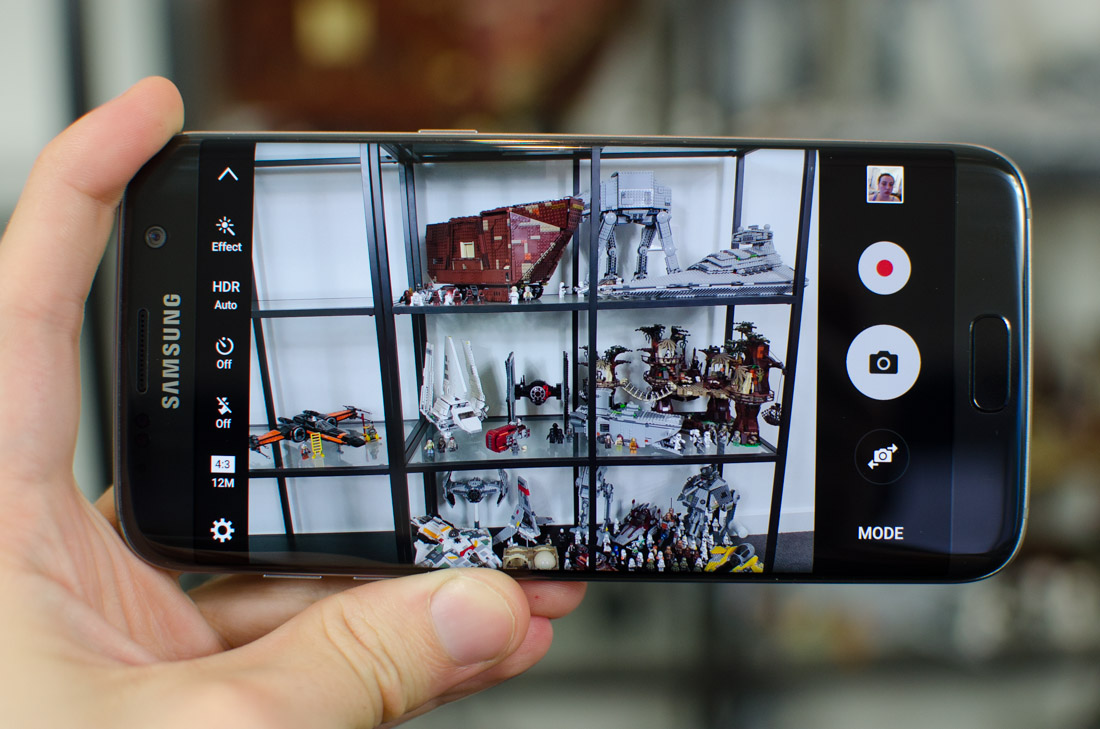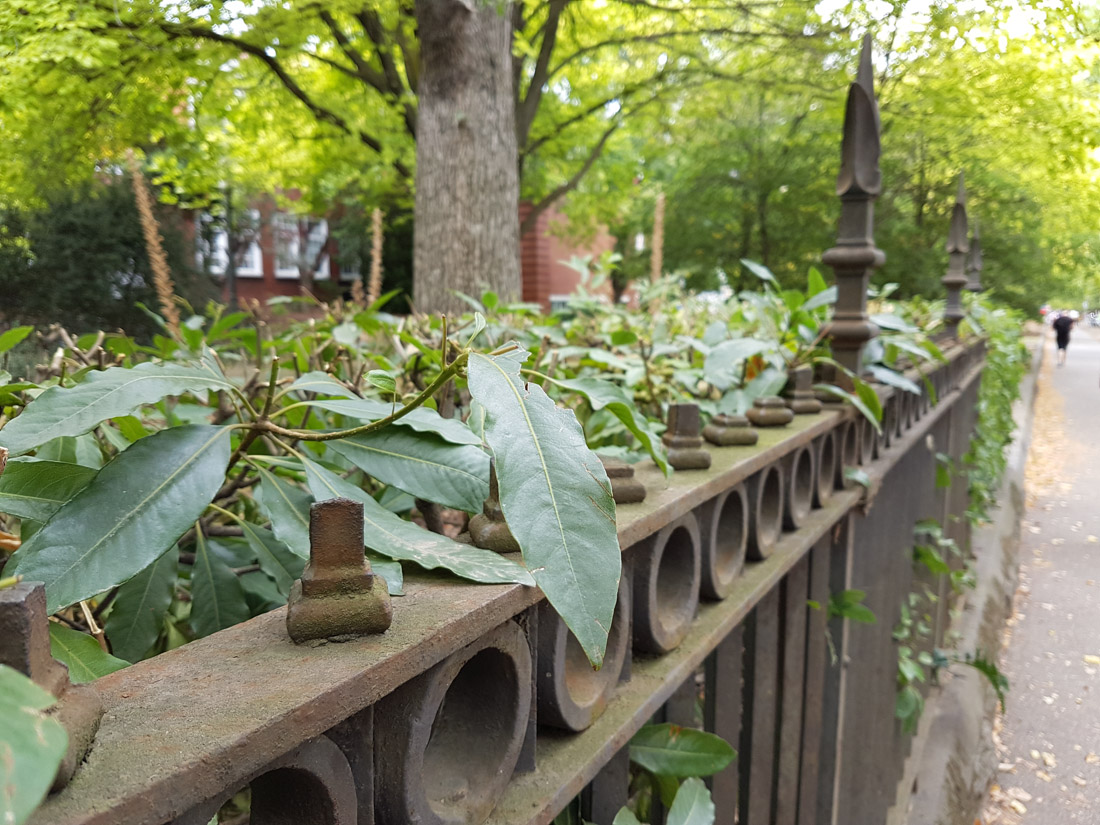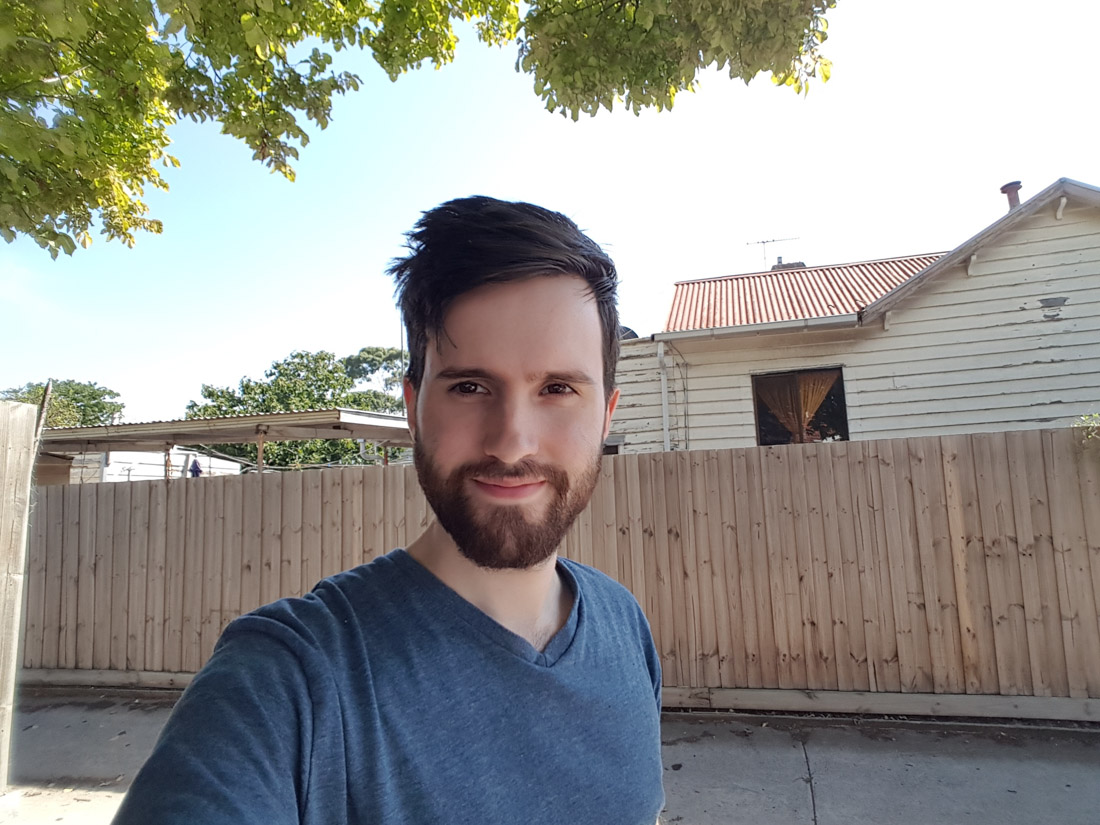How To Keep Galaxy S7 Edge From Taking Burst Camera Shots
Camera Performance and Quality
Inside the Galaxy S7 and S7 Border we're getting all-new cameras. Gone is the old sixteen-megapixel sensor with 1.ane micron pixels, instead replaced with a 12-megapixel Samsung S5K2L1 (or Sony IMX260) 1/2.5" CMOS sensor with ane.4 μm pixels. This is a downgrade in camera resolution, but the increase from 1.12 to 1.4 microns equates to a 56% increase in light gathering ability.
The lens that accompanies this sensor is a 25mm-equivalent with an aperture of f/1.7, which again is an increase in light gathering ability of 25% over the f/1.9 lens on the Galaxy S6. Combined with the pixel size increment, around 95% more light is beingness captured by this camera organization overall, which is a huge comeback over the last generation. Optical paradigm stabilization is besides included to complement the package.

On the front is a 5-megapixel Samsung S5K4E6 sensor, which appears to be the aforementioned one/4.1" sensor with 1.34 μm pixels every bit the Galaxy S6, paired with an f/1.vii 23mm-equivalent lens. Again, the increase in aperture from f/i.ix to f/i.7 provides a 25% increase in lite capturing ability. Both the front and rear sensors are native 4:3 in aspect ratio, with the rear sensor ditching 16:ix in favor of the more than common image format.
The rear camera is equipped with a unmarried-LED flash, and it tin can record footage upward to 4K in resolution at 30 FPS. It's also capable of 1080p60 recordings, besides equally 720p tiresome motion footage at 240 fps. The front photographic camera is locked to just 1080p30 recording due to its express resolution and hardware.


The big innovation that Samsung has made in their rear photographic camera with the Galaxy S7 is dual pixel technology. This refers to how every pixel in the sensor is split up into 2 photodiodes, which allows phase detection autofocus to occur at every point on the image. For actually capturing images, the two photodiodes combine their information into i 1.iv μm pixel, delivering what should be very comparable low light performance to standard 1.4 μm sensors.
Dual pixel technology allows the Galaxy S7 and S7 Edge to have the fastest camera autofocus system I've always seen on any camera. As the photographic camera can gather focus information from every pixel, information technology ever knows where the image is in focus, and it can make near-instantaneous measurements and adjustments to go along focus. If you bring an object into the photographic camera'south field of view or move the camera itself, the S7 will gain correct focus in mere miliseconds. Tap anywhere on the screen and yous can expect like results.



With such fast autofocus, you never have to wait for the Milky way S7 to find the correct focus before taking an image. You but betoken at an object and immediately press the shutter button, and you'll get a smashing paradigm. Information technology's particularly useful for moving objects; the S7 tin can very quickly adjust its focus as objects motility around the field of view.



Image quality from the S7 Border is excellent in a wide variety of situations. In potent lighting, smashing dynamic range and contrast combined with auto-HDR delivers rich, detailed and vibrant images that come up shut to replicating real-world scenes. Despite a downgrade in resolution, sharpness and clarity is all the same excellent from this camera's 12-megapixel stills, and zooming in reveals few artefacts in all but wide shots, indicating Samsung has toned down their noise reduction and sharpening filters present on the S6.


The f/1.7 lens delivers very respectable bokeh for a smartphone camera, which gives a pleasant background blur to macro photos and shut to mid-range shots. Despite the wide discontinuity, the narrow depth of field was piece of cake to manage in most situations, and it's only in the closest focal distances that it starts to make a difference to how much of an object is in focus. Even then, you tin get some stunning macro shots out of this camera.




Great prototype quality continues when shooting indoors and in other less ideal conditions. The increased light gathering ability of this camera means that the S7 Edge tin use shorter shutter speeds and lower ISOs when shooting indoors, which helps deliver better quality. I took some great shots in lesser light where the Milky way S6 struggled, maintaining peachy color quality with picayune (if whatever) visible grain or artefacting.



Low lite operation is nonetheless a weak indicate with virtually smartphone cameras, and that's the case with the Milky way S7 too. However, performance in this surface area is improved compared to competing smartphones, and it is possible to go skillful images without using a wink. The S7 does accept a addiction of over-brightening scenes, occasionally to its detriment as information technology can select unnecessarily loftier ISOs, thus introducing grain, simply at the same time this tin be a bonus in some scenes.


Of the few complaints I have about the Galaxy S7 Edge's camera, one would be that nigh images are tinted towards the 'cold' end of the spectrum. The iPhone 6s, for instance, shoots similar photos with a warmer tone, which tin look more natural in wide sunlit shots. Under artificial low-cal, the S7 can too lack the same level of dissimilarity you get outdoors, although the photographic camera is meliorate in this regard than most other high-cease smartphones.
Source: https://www.techspot.com/review/1147-samsung-galaxy-s7-edge/page6.html
Posted by: crawfordhaterreact1959.blogspot.com

0 Response to "How To Keep Galaxy S7 Edge From Taking Burst Camera Shots"
Post a Comment